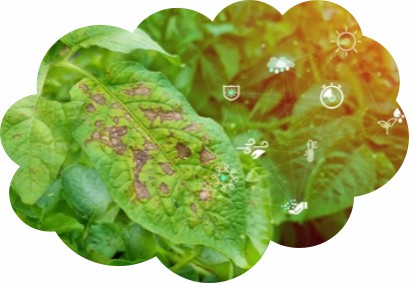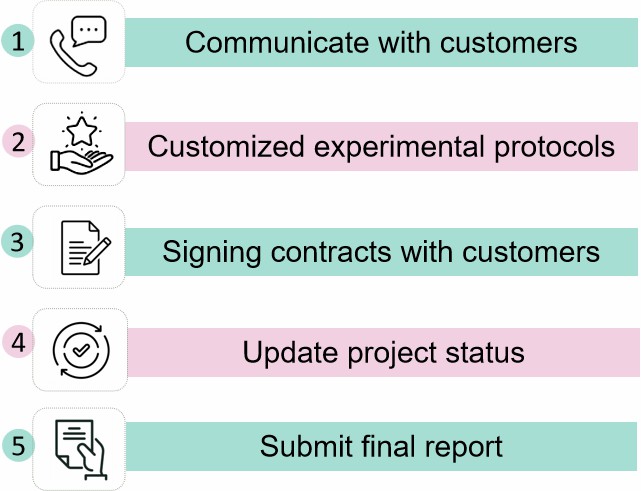Reactive oxygen species (ROS) are by-products of aerobic metabolism in plants. When the level of ROS is low, ROS are involved in intracellular signaling and regulation. Still, the level of ROS increases dramatically under environmental stress, which may cause DNA damage, inhibit gene expression, lead to protein misfolding, and even affect protein synthesis, causing serious damage to the cellular structure. ROS are involved in regulating plant growth and development, controlling plant growth and development by directly or indirectly regulating cell growth, and have become an essential regulator of plant growth and development.
Lifeasible is committed to plant research. Based on our advanced technology platform, we provide researchers with high-quality plant cell ROS detection services. So far, we have helped researchers complete many important projects such as precisely determining reactive oxygen species. We help researchers to understand plant physiology and molecular biology and play an important role in research and practice for agricultural production and environmental protection.

Significance and application of ROS detection
There is a great need to detect ROS, determine their role in vivo, and indicate their optimal levels to reveal the exact relationship between ROS and the main components of the ROS control system.
- Oxidative stress research. Reactive oxygen species is a chemical that plants use to signal oxidative stress. As such, it can regulate several physiological processes, including development, growth, and stress response. Reactive oxygen species levels in plants can be measured to provide information on how they respond to stress in various physiological and environmental contexts. This information can be used to identify the regulatory network that underpins plant stress resistance.
- Disease prevention and control. Numerous diseases, particularly plant diseases, directly relate to reactive oxygen species in their occurrence and progression. Plant resistance to disease can be determined by tracking the concentration of reactive oxygen species in plants.
- Environmental stress research. ROS detection allows for assessing the degree of plant response to environmental stress, which advances our knowledge of the mechanisms underlying plant adaptation and serves as a foundation for enhancing crop resistance.
- Genetic engineering and breeding. Since genetic variables control the amount of ROS, measuring the ROS level can be used to evaluate the stress tolerance of various plant species or transgenic plants.
Methods for the detection of ROS in plant cells
- Chemiluminescence method. Chemiluminescence is a commonly used experimental technique in the detection of reactive oxygen species; the principle is that the chemiluminescent agent reacts with the reactive oxygen species to generate products in the excited state, and the electrons in the products Jing non-radiatively jump back to the ground state and emit photons. Currently, we commonly use chemiluminescent reagents such as luminol, lucigenin, and fluorescein of A family of animals.
- UV-Visible Spectrophotometry. Also known as ultraviolet-visible absorption spectrometry (ultraviolet and visible spectrum), the most used methods in the detection of ROS are the O2- reduction of cytochrome C and the reduction of nitrogen basket tetrazolium (nitro blue tetrazolium, NBT).
- Fluorescent Staining. Fluorescent staining techniques can detect hydrogen peroxide at the subcellular level in vivo and in vitro. Commonly used fluorescent dyes are dichlorofluorescein diacetate (DCFHDA), 4-aminoantipyrine, scopoletin, etc. Catalyzed by horseradish peroxidase, hydrogen peroxide oxidizes these substances to produce fluorescent substances that are easy to detect. This method is simple, effective, and widely used. The advantage of fluorescent staining over other methods is that the subcellular localization of H2O2 can be visualized easily.
- Diaminobenzidine (DAB) tissue staining. DAB permeabilization of plant leaves to localize H2O2 is a commonly used tissue staining method. The principle is that H2O2 reacts rapidly with DAB to form a brown compound catalyzed by the enzyme peroxidase, thus locating H2O2 in the tissue.
Our services workflow

Lifeasible is dedicated to plant research and has many years of experience in ROS detection. We have many years of experience in ROS analysis. In plant ROS analysis, we can help customers customize specific solutions to meet their project needs and material characteristics. Our plant ROS service is of great significance in helping researchers explain the metabolism and signaling of ROS in plant-pathogen interactions. Please feel free to contact us for more information.
Our products/services are For Research Use Only. Not For Clinical Use!

